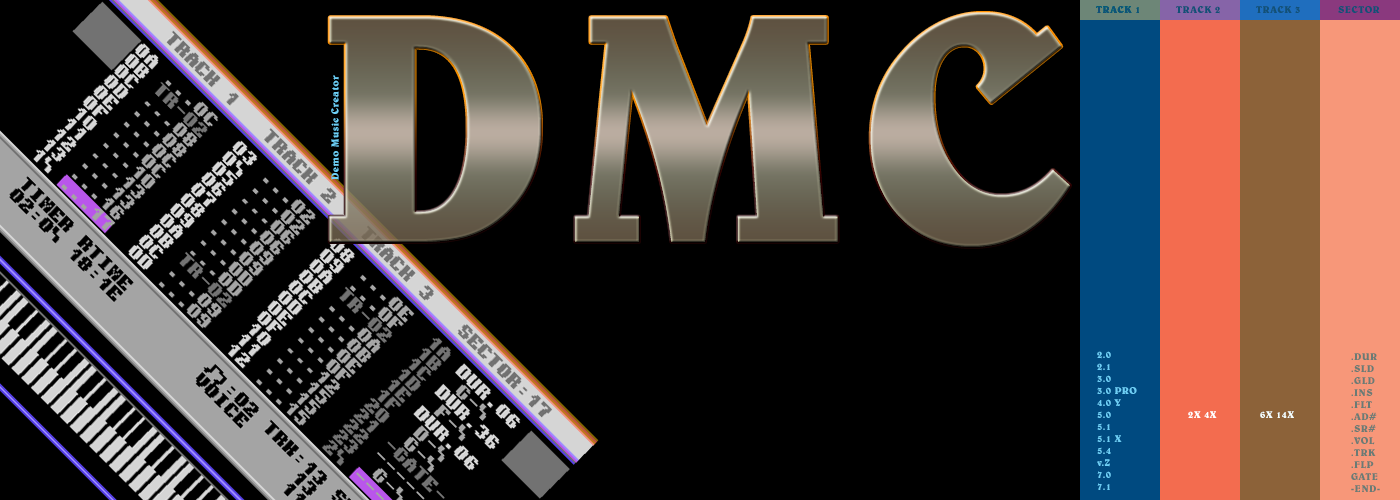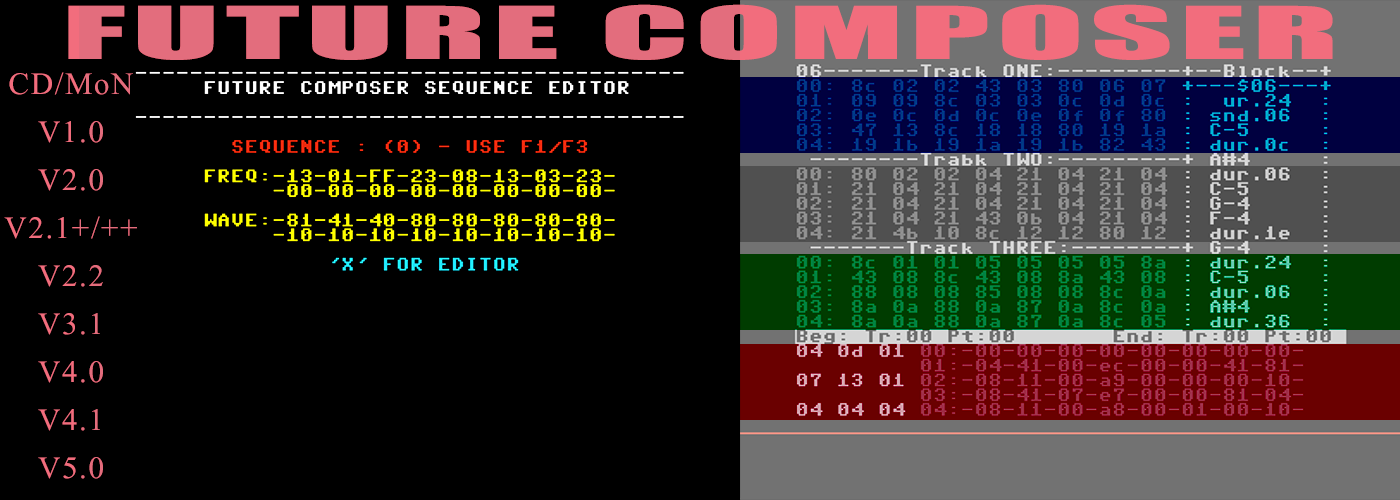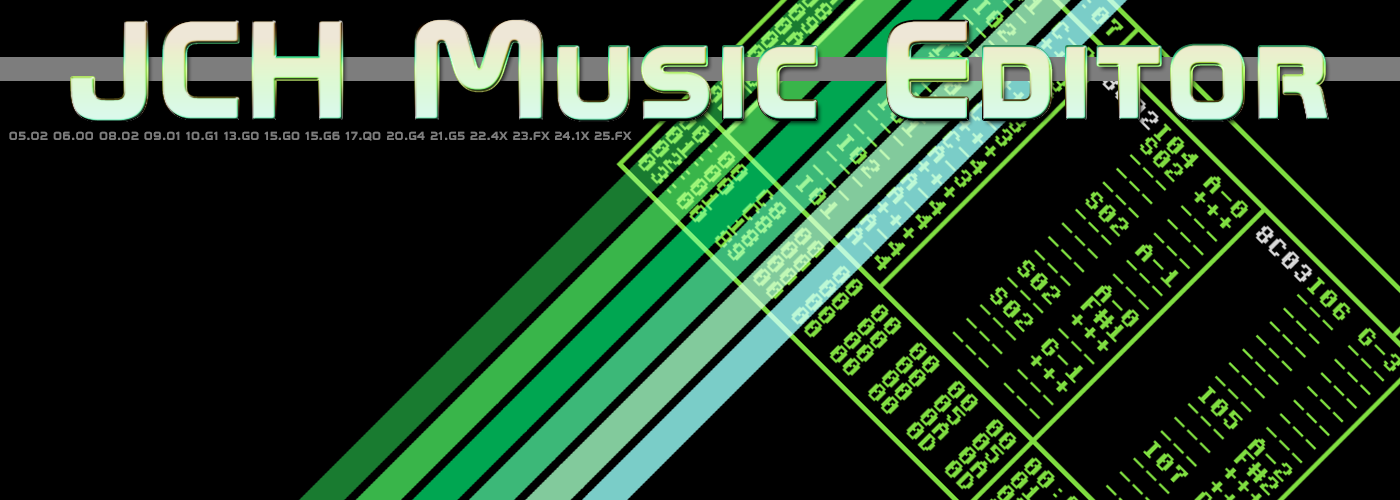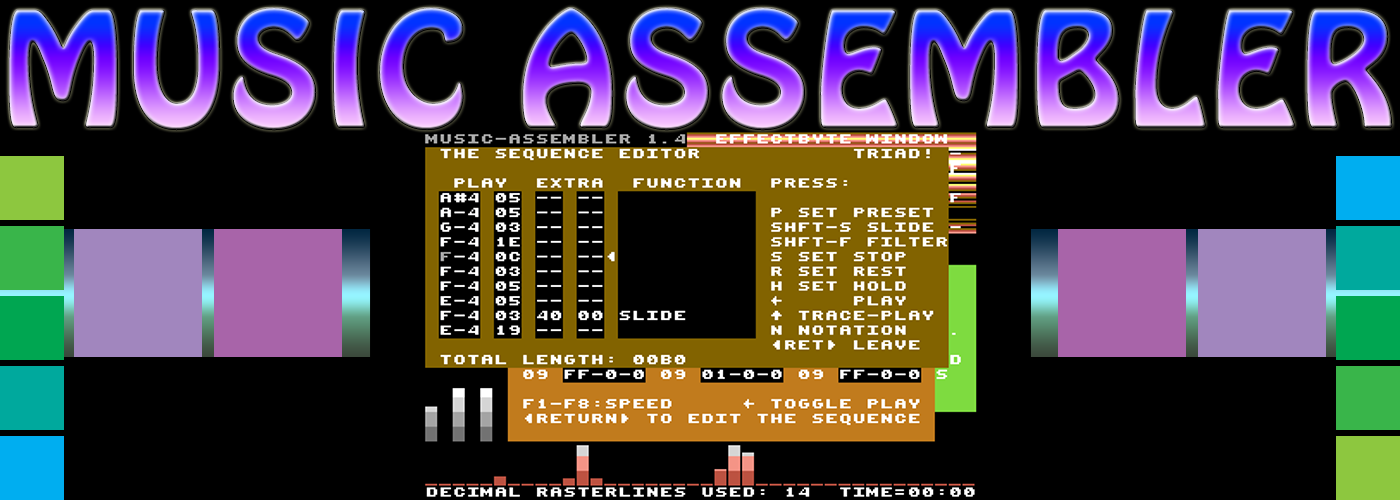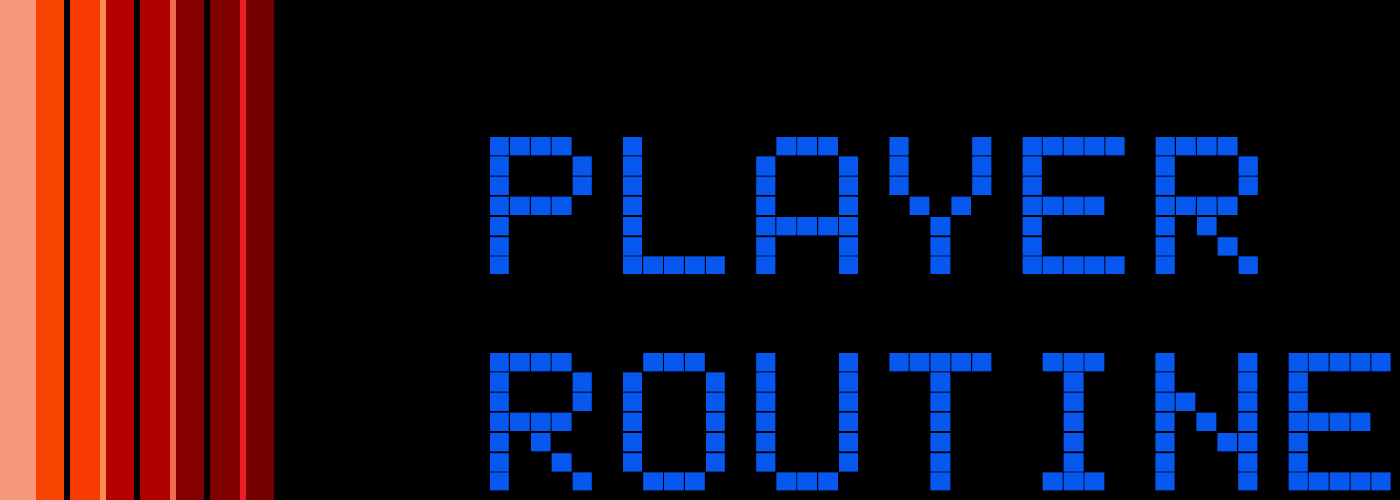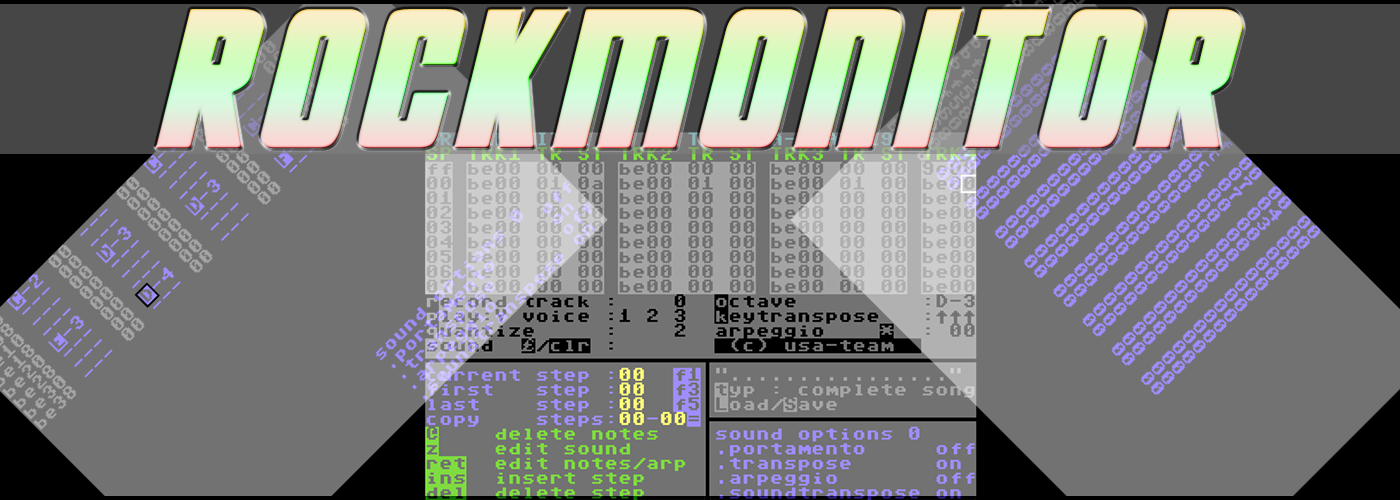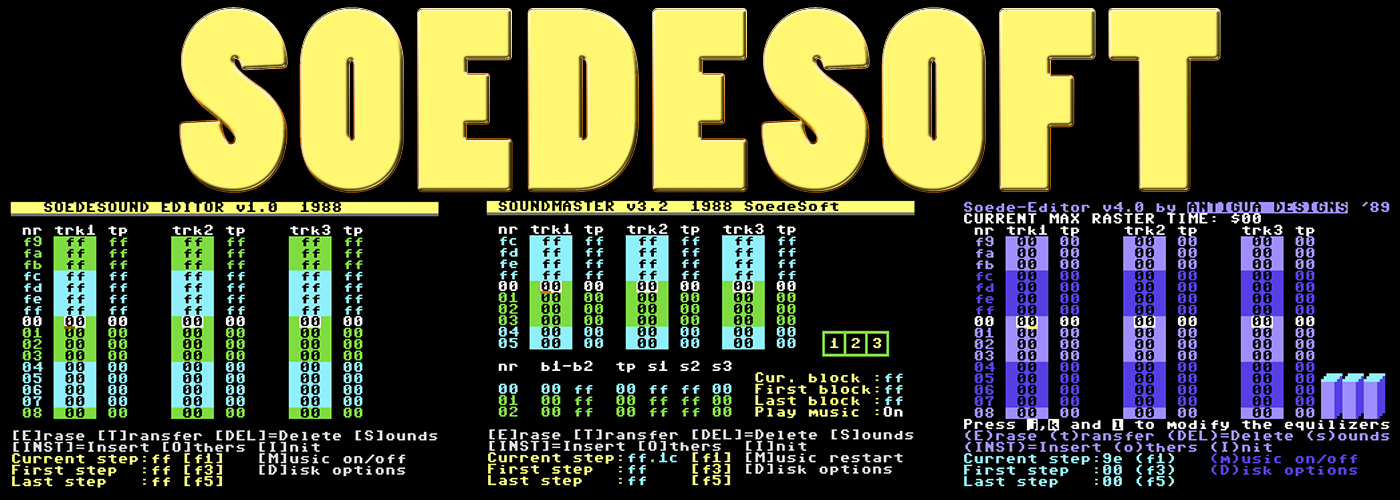Welcome to the SID Preservation mine!
Sid preservation
Why sid preservation? The main reason for this time capsule is going back in time nearby the end of the 80s when my focus started to orbit around the computer music and particulary the so called "loading screens". When looking back this was for sure a habit than an exception, to pause the tape and listen to the music till it really hit the end. However, this process was not the most portable one, especilly when the urge to listen to the favorite music got more intense than the reach for a Commodore 64 each time to fill up the urge.
The start of SID Recordings
I started to look up how to connect the "Audio Out" from the Commodore 64 to an input source, because very soon the sound quality wasn't good from the RF connection, due all the fuzz and artifacts from the RF Modulator. When the right pinouts were spotted it was time to build the very first cable! This was huge. Not only could every possible SID sound or song be recorded at any given point, but to have the sound in speakers was awesome.
Around this time I was also into synth and hip-hop music so it brought ideas into my mind to mix SID Audio with Music! At first it was scary to see the reaction and hear what people had to say about this crazy experiment! To say the least it was success. I got noticed for doing things no one else did. One of my wildest experiences was when the speaker banged out "Kraftwerk VS BMX Kid". Now that was wicked cool. Also it was a breakthrough on the Commodore 64 to hear samples and it did sound blasting good.
Time moved on and so did the recordings. I even tried to sell some mixed tapes with SID music but yeah it didn't do it too much. Most said it wasn't "music". Bah, how can they say something like that! In my world this was just as good music as any music, if not even better. This process was good for me and I wanted to be able to make music like Martin Galway, Rob Hubbard, Fred Gray, Ben Daglish and many more. It was time to learn how the heck do they do that!
Hello world - let's speak and spell
The first "player" I wrote was in basic and it could play triads. I had lots of fun with this and at a time I started to tweak around with SID+ Audio music. I wrote a song on piano and "enriched" the soundscape with triads from the C64. This took another level when I got my first 4 Channel mixer deck. Now it was possible to do even more, layer chords from the C64 with piano and believe it or not violin! But still I wanted more. It was one thing to punch in the data in basic and listen to it, than to make more complex sounds and songs, just like the "grand composers".
Many hours and months were spent to discover the secrets how to make "that sound". At that time I did not come too far, though. 3 channels with drums, base and chords/arps was cool but not even close to what I knew the SID chip could deliver. So for many more years I was bound to only listen to music and dream on, which later on would pay off!
Hello my name is Sam
When my connections to the "demoscene" started to grow, the door to "access" also started to grow. It was like a seed that always been in my pocket, I just didn't know how to plant it and learn how to grow the seed into a plant. Then the day came when I had some "composers", and the process to write SID music took place. One of the first editors was "Future Composer" and "Music Assembler". The names were sounding cool and opened up new ways to create music. This was a frustrating time, a song took ages to make since I had to both learn how to make sounds and how to assemble them into an actual song. Also around this time I got a PC and well sadly my C64 died on me due some hardware failure.
There I was left to a PC and a broken C64. The PC was limited at that time when it came to make "demos" and "music". The internal speaker sounded like crap and I was really "pissed off" at the sound. I thought it MUST be a way to make something more of this. After some months of digging, I got a tracker on the PC that made it possible to write music.
The tracker system was nothing like what I was used to work with. Instead of durations I had to work in blocks and lines. It felt crazy at first but after a while it made perfect sense. Now knew what this was all about. Around this time I got to know some Atari demosceners who introduced me to the Atari. After a while I had an Atari 1040 STE(later on upgraded to 4096). This was awesome and again I was able to make even more music inside trackers and YM-editors.
Even if it was great fun with both the Atari and PC, the biggest demoscene for me was still Commodore 64. It was there all the madness productions came out. Also the Amiga demoscene was crazy. The demos were wicked in many aspects. Slowly some SID Players started to pop up on the PC but it was horrified how they sounded. This was nothing like how I was used to listen to SID songs. That sounded like crap! I could not stand this "abuse", so it was time to get two Commodore 64. One with the old 6581 SID Chip and one with the new 8580 SID Chip. Finally life was great and I started to "preserve" the SID, without not knowing it at that time.
Let me introduce myself
The first years I did recordings for my own purpose. Most was to analyze the difference between the different SID Revisions. The idea came up when I got two identical C-64 equipped with the 6581. Even if the models were equal, they sounded very different. As both were Revision 3, it was advocate how this was possible. After some experiments and Audio Analysis it was clear the different Revisions did have unique Filter Curves. This lead to getting more C64:ers. The purpose was to get a setup for 6581R2, R3 and R4/AR. Mission accomplished.
This process lead to various SID Recordings from different SID Chips. The end result set 1000nd recordings. After the experimental session files I wrote to the actual composers to ask the exact SID Models/Revisions they used during the time they wrote their songs. The goal was to enhance the SID Recordings to get as close to the original as possible. However, there as more to this than anticipated. It still was differences between the exact same SIDs. The only way to come around this was to play around with the caps controlling the filter. I decided to make a special C64 for this. Equipped with a SID 6581R3, I arranged different caps that could be changed with switches. Each cap was measured to a specific composer. The composers were: Martin Galway, Rob Hubbard, Fred Grey, Ben Daglish and "generic". This was good to record classic SIDs but soon I realized that what did sound good in my ears maybe didn't sound the same for another listener. Still it was fantastic to accomplish such a task.
The kick off
Somewhere in 2008 the journey took a huge kick when I started to collaborate with an online radio project called "SID RADIO". The project was successfully and very soon I contributed with collections and requests for the station. Now I also took my SID Recordings to another level. Each Recording was carefully edited to remove the Init SID, Init Player and if the SID was looping I made sure to get a nice ending with fadeout or cut to beat. This year I also started to make visual title screens for the SID Recordings and put them on my youtube channel. This was really fun to use all the preserved SID Recordings and distilled them into a "Player Screen", to resolve as much info as possible for each song. Since I had done SID Remixes it was fun to start from them and write the full credits. As more I did, as more information I wanted to dig out.
Master of The SID Recordings
This lead to something unique. I had something no one else could supply. Now, the players included, "Composer, Songname, Year, Group, SID Model, SID Revision, Player ID and Speed". I received lots of positive feedback and requests. As my VFX skills grew and yes I did lots of 2D/3D work too, it so to speak, "walked hand in hand". I could combine fun with passion. The passion and dedication for the beloved SID Chip and the true joy to set my imagination free.
Getting divided from the rest
Also I started to focus on the Sound Quality, how to get the finest quality possible from the SID Chip, without getting too extreme. I startet to bypass the RF Modulator, to get rid of any interference sounds from that ugly box. A very little but improved fix was to ground the "Audio In" on the SID to the ground or do a "Feedback" mod. Now, the sound from the VIC chip was muted. No more 50Hz fizz or hisses were heard. The next step was to prepare a computer with 2SID. The version I got can host two SID Chips and change the address for the second SID Chip. Set to default the second SID Chip works as the 1SID, with the option to get dual stereo.
The experiment with dual stereo made me work on a stereo separation module, that could simulate true stereo. I made two prototypes "SIDiZER V0.4" and "SIDiZER v0.5". The project was put on ice due I had many other projects that ate up the time. Anyhow, now I was able to record anything, no matter what. This made me start an ongoing project to record SIDs from Demoparties. The kickoff was more than awesome, as well as the feedback! The requests popped in like ants in the pants! "DEMOSCENES" got big and compact! This is something I do from time to time and as soon as there is time I make sure to record another fine SID Recordings!
Stay for a while - stay forever
Even if most of the SIDs from classic games and composers has been released there is always more to find. The past five years the urge to find unreleased data has been very intense for me and each time an unique release is dug out the reward is absolutely remarkable. Not just to get credits for it, but the history is one of the finest finds to get. No matter how much that has been released the special pieces are the best. The way to accomplish this is very long and it requires both skills and knowledge. Like where to find the "hidden treasure" and how to find and harvest the "lost data".
Most of the data I have explored come from safe sources; like ex. demosceners who still have their golden floppy boxes laying around but never get time to preserve. Even if the main goal as explained earlier is to "preserve" the whole floppy, this particular mission is also to dig out SIDs that aren't released, yet. Another source is to bid on auctions and perhaps be the lucky explorer to find the jackpot.
Even if you think everything has been released, think again.
TRUE SID PRESERVATION and FINE Data ARCHAOLOGIE!
Xiny6581
